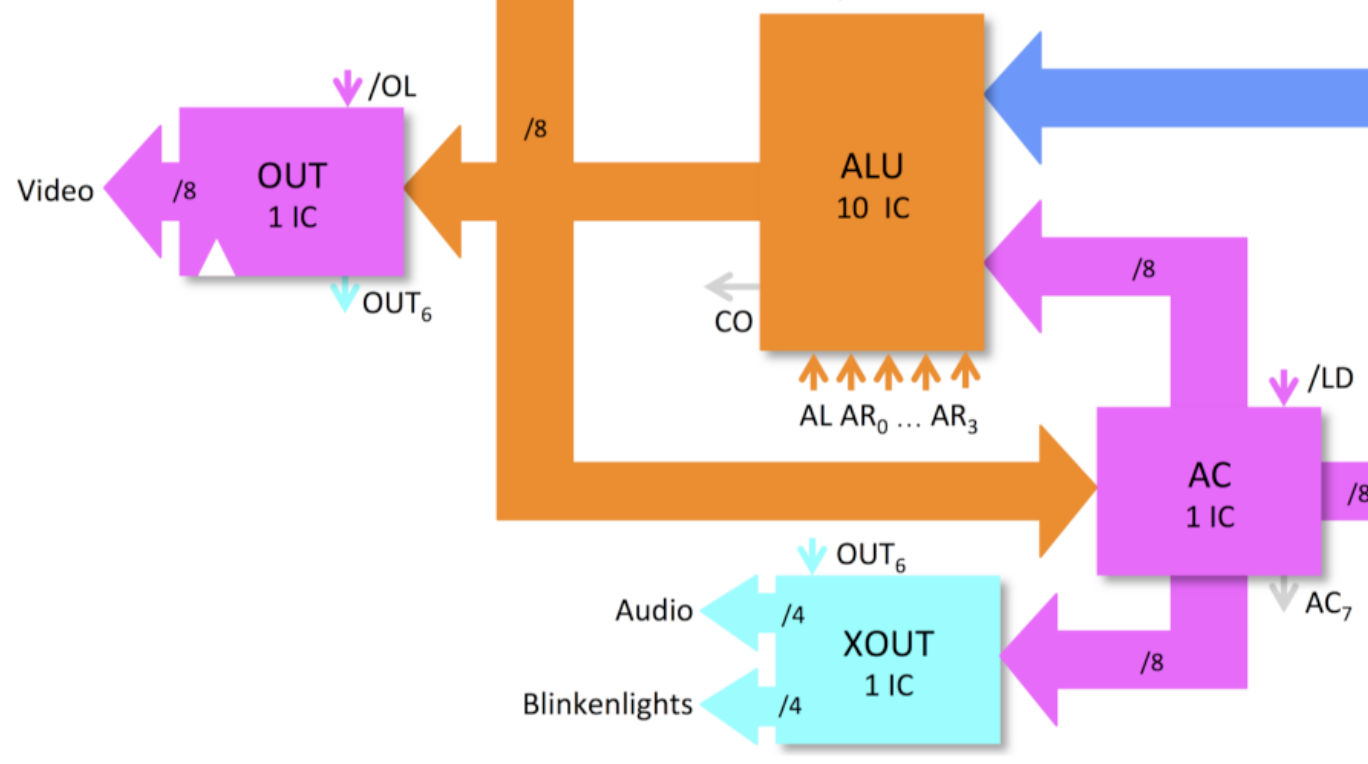After software-generated video we now also have a software generated sound playing. In four channels! And the blinkenlights are blinking, slowly getting there...
Sound and LEDs are driven by the same 8-bit extended output register which receives updates during the horizontal video sync pulse. I have split its output into 4 bits for sound and 4 bits for the LEDs. Every VGA scan line one of four independent software oscillators gets updated by the software. Every four scan lines their sum goes through the R2R DAC into the 3.5mm audio jack to the PC speakers that I picked up from a thrift store. Here I initialised the channels to play a G-major chord. I don't have a music sequencer yet, so it is just one chord. But as you can see there is a LED sequencer in place already, the music sequencer will be similar.
The extended output XOUT is just 1 extra 74273 chip that is not directly visible to the processor. It lurks on the horizontal sync for its clock and it gets its data from the accumulator. So typically it takes 3 instructions to update it. Here is how I switch off all LEDs immediately after power-on:
address | encoding | | instruction | | | operands | | | | V V V V 0000 0000 ld $00 # Clear AC 0001 1880 ld $80,out # Negative flank (bit 6) 0002 18c0 ld $c0,out # Positive flank (bit 6). This causes XOUT to be updated.
It is a simple way to get 8 additional output pins. Here it is in the block diagram:

Hardware-wise this is the second PCB build, the difference with the first board being the logic family soldered onto it: The breadboard and first PCB were using the classic 74LS series of TTL, while this board is using 74HCT chips for a change. They are completely compatible, only the video resistors needed somewhat higher values because the 74HCT outputs are always near the rails. As a result of this change, this specific board uses a lot less power: Just 80 mA for the FETs vs. 530 mA for the bipolar versions (or <0.5 Watts vs. >2.5 Watts). It should run for days on that battery pack. The difference between 1983s technology vs. 1971s...
 Marcel van Kervinck
Marcel van Kervinck
Discussions
Become a Hackaday.io Member
Create an account to leave a comment. Already have an account? Log In.